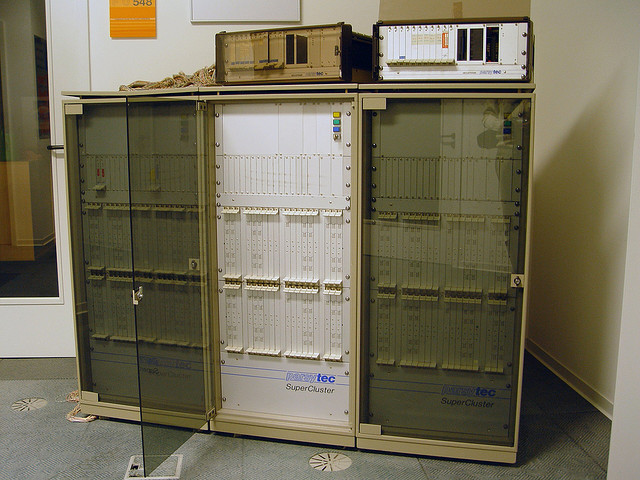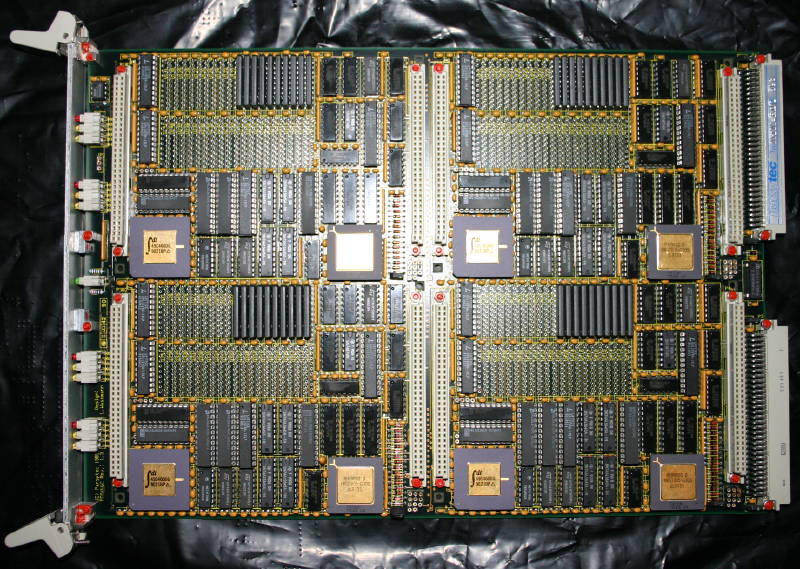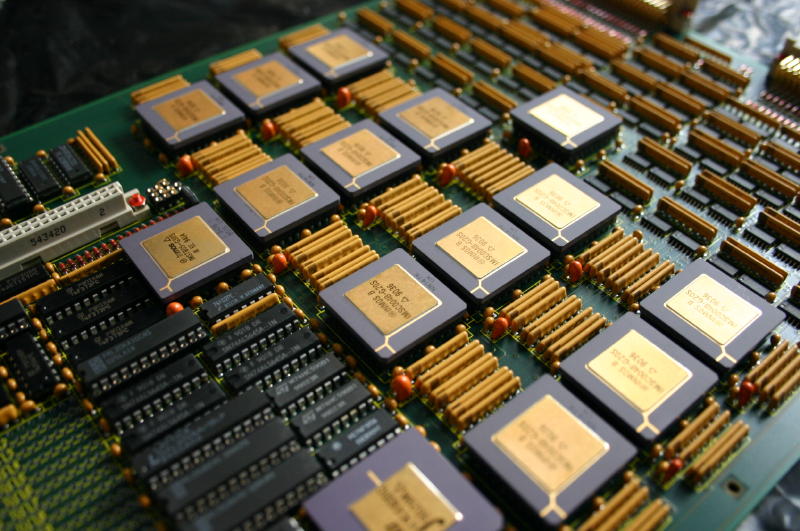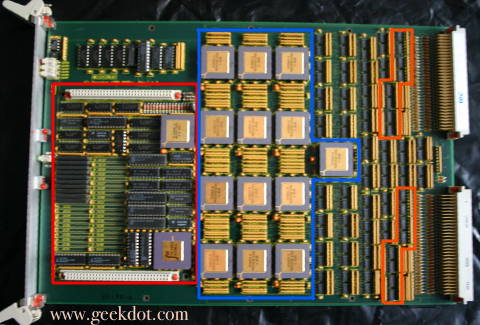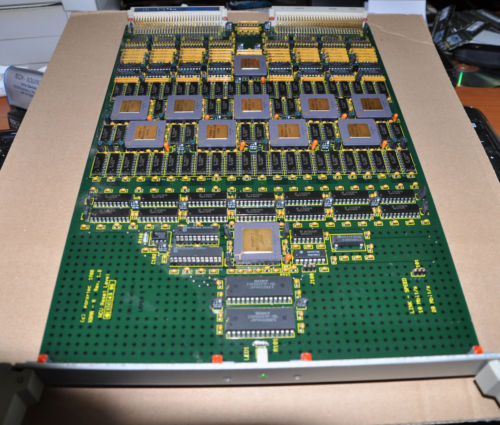The Parsytec SuperCluster was the first system moving away from the classic Eurocard (wikipedia) based machines like the predecessor “MegaFrame” – also, due to the availability of the FPU in the new T800, the previously supporting Motorola M68881 was dropped.
This is how a SuperCluster looks like (NB: Two MegaFrames sitting on top of it):
(This specific system still stands as an exhibition in the halls of the University Paderborn. It has 320 Transputers, 4MB RAM each, total performance is about 1.1 GFlops/sec. Picture courtesy of “[CD]Overkill”)
This is the CPU Module (4 nodes, 4MB each) – while being bigger because of the use of many DIP parts, the basic design is very similar to the later GigaCluster node:
And this is the so-called NCU- or XBAR-Module (Network Connection Unit/Crossbar, in this case the “L” version) consisting of 13 C004 Network-switches and one controlling T425 Transputer:
A “Map” of the NCU (Red CPU-Node, Blue C004s, Orange RS422 transceiver):
If my interpretation is correct, 4 CPU Modules were combined with one NCU, so 16 Transputers were connected to a 12-C004 Network using the 13th C004 to connect this “Cluster” to the ‘outside’, e.g. backplane with more Clusters.
For completeness sake, here’s a picture of the NCU “version R”. It consists of just 10 C004 and the controlling Transputer is a T222 – given its layout in pure DIL, this might be the predecessor of the L-model.
As I’ve learned from another “SuperCluster Enthusiast” (That probably makes it 2 world wide ;-)) both NCUs were used in a SuperCluster. “L” and “R” simply stands for “Link” and “Reset”, so those signals were handled by separate NCUs.
The two larger ICs in front of the T222 are SRAMs (64K total) making the design even simpler.

